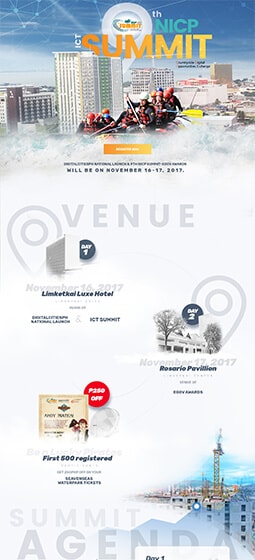
Why Evaluate Software Through Testing and QA
Due to advancements in technology, businesses rely on software to enhance staff efficiency and streamline work operations. Therefore, it’s integral to build end-products that work smoothly and function as intended, highlighting the importance of software Quality Assurance (QA).
Through software testing, QA testers evaluate whether a project meets specific needs set by the customer or client through various tests.
The testing process, often referred to as the Software Testing Lifecycle (STLC), runs parallel to the development life cycle.
In every phase of the STLC, software developers assess the project’s functionalities and performance with the set requirements. Moreover, they ensure that the software is free from bugs and vulnerabilities, enhancing its usability.

Source: Comparitech.
The Importance of Software Testing and Quality Assurance
Through software testing, QA specialists find ways to improve the technical aspects of a software solution.
Meanwhile, Quality Assurance is a comprehensive and systematic process that helps guarantee the quality of the product. This involves continuous cycles of verification and validation to produce functional software.
Testers evaluate software to verify that the business software satisfies clients and end-users. At every stage, they check the project for errors and report them to developers for fixes, preventing issues from happening in the future.
Thus, when the software successfully passes all levels of testing, the final product meets — and may even go beyond — expectations.
Benefits of Quality Assurance in Software Development
QA testing is important for software projects because it ensures an excellent user experience. As such, QA specialists evaluate development and test cycles while verifying the standard of software components through rigorous reviews.
In addition, QA involves the in-process collection of data and documentation of procedures. Quality Assurance professionals work on crafting preventive measures against bugs and errors instead of restorative methods.
Moreover, specialists follow and evaluate the entire software development cycle. They write bug reports to help developers improve the project, conducting evaluations using a user-focused approach, from coding to testing.
Software Testing Types, Methods, and Techniques
Let’s delve into the various types, methods, and techniques used to evaluate, verify, and validate software:
Types of Software Testing
There are two main types of testing for development projects: manual and automation testing.
Manual Testing
In manual testing, a Quality Assurance tester compiles the software and performs the test from the user’s perspective. Through this type of test, they manually detect the errors and bugs using different levels of testing.
They follow a plan, case, and scenario-based execution to complete the test.
Automation Testing
Automation tests require testers to write scripts, but they can use external software to perform the tests. Thus, manually-tested products may go through automation testing to double-check their quality.

Source: Capgemini, via PR Newswire.
Methods Used in Software Testing
Here are the three main methods used to test software solutions:
White Box
Through white box testing, internal boundaries and data domains are verified in detail.
This type of testing is alternatively known as structural testing because it uses the software’s internal source code structure. It‘s a unit-level test that ensures that the software’s internal performance aligns with set specifications.
Black Box
This is an interface-level software test that measures a business software’s functionality without considering its internal code structure.
Black box testing is a trial-and-error software test method, also known as input-output or data-driven testing.
Grey Box
Grey box testing combines the two previous methods. It helps Quality Assurance testers discover bugs or vulnerabilities. This type of testing uses limited knowledge about the software, such as its database and design documents.
Techniques Used in Software Testing:
There are four main software testing techniques: unit, integration, system, and acceptance testing.
Unit Test
This type of test validates the software product’s unit-level components, where the tester checks each source code and matches it with the expected outcome.
Unit testing is a widely popular approach to examining software for potential issues. According to a Statista survey, unit testing was used in projects by as many as 63% of respondents. Integration testing came second at 47%.
Integration Test
This type of test examines the connectivity between the unit modules. It helps testers identify the bugs that affect the interaction between the integrated unit components.
System Test
This technique is also called end-to-end testing because it verifies the entire software. Testers provide a comprehensive report on the software’s performance and compliance with established business requirements.
Acceptance Test
These are pre-delivery tests that QA specialists do alongside the user. In acceptance testing, the business software undergoes testing from the user’s perspective before it’s delivered to the customer.
Ensure the Quality of Software With QA Tests
Software testing and Quality Assurance work hand in hand to produce high-quality business software. These two processes ensure the improvement, enhancement, and innovation of software for business use.
With the aid of QA testers, developers can build software to address specific business needs, goals, and objectives!
This blog was updated on January 6, 2025.
Frequently Asked Questions About Software Testing and Quality Assurance
What is software testing?
Software testing is the process of determining and evaluating whether a development project meets the particular requirements set by a client.
Why is software testing important?
In general, software testing is essential because it ensures that the development product provides an excellent user experience. Software QA specialists always ensure that projects satisfy clients and end users.
What is the relationship between testing and Quality Assurance?
Testing and QA are key components of the development lifecycle. They’re closely related to one another, but they serve distinct purposes.
QA sets the framework and standards for quality. Meanwhile, testing ensures that these standards are met by identifying and fixing issues within the product.
What is the purpose of a QA tester?
A Quality Assurance tester ensures that software meets quality requirements. Their responsibilities include:
- Validating functionality;
- Identifying bugs;
- Ensuring usability;
- Improving quality, etc.



















John
Thank you, Xenia, for covering the various facets of software testing. It is imperative to evaluate software through software testing and QA. Software testing is the process of verifying a system with the purpose of identifying any errors, gaps, or missing requirements versus the actual requirement and is broadly categorized into two types – functional testing and non-functional testing. It evaluates the functionality of a software application with an intent to find whether the developed software met the specified requirements or not and to identify the defects to ensure that the product is defect-free in order to produce a quality product.